Even as there were signs that there has been some improvement in the insurgency situation in the North East, with the level of violence declining and some insurgent groups showing signs of battle-fatigue, a sudden resurgence of insurgency in the region is turning out to be a cause of concern. Indeed, even the Indian home minister who had earlier expressed optimism about the security scenario in the North East had to admit during a press briefing on 6 July 2011 that the level of violence in the region has gone up.
Recent reports have also stated that there has been realignment among anti-India forces in the North East, a development that seems to indicate that the situation can worsen. These pertain primarily to the following:
a) Seven important insurgent groups of Manipur, namely KCP, KYKL, UNLF, RPF, PREPAK, PREPAK (PRO) AND UPPK have decided to join hands to “regain the lost sovereignty of Manipur.” Emails sent to the press stated that a “very high level conclave” took place in the first week of July 2011, and a “co-ordinating committee” of the seven organisations was formed, which elected RPF president, Irengbam Chaoren as the convenor of the committee. The emailed statement also said, “India has been ceaselessly exerting its maximum effort in imposing its grip in the region and hence the need to fight together against the former has become a matter of necessity.” Unconfirmed reports are of the opinion that although the Manipuri insurgent group, PLA is not part of the newly formed conglomerate, the outfit’s commander-in-chief, Manohar Mayum midwifed the birth, reportedly at the instance of China’s intelligence agency, MSS’ Second Department. It would be recalled (reported in a VIF analysis by the author in November 2010) that Mayum had met journalists in Myanmar’s Somra Tracts (opposite Ukhrul) and had proclaimed his group’s alliance with CPI (Maoist) to fight the “common enemy.” He had said (the statement below is a verbatim replication of what the PLA leader said in a video-taped statement, excerpts of which are in the possession of the author) “We have been maintaining relations with CPI (Maoist) for some years. But from 2008 this has become stronger and it has been upgraded to a new level. We should unite against a common enemy. This unity should be part of our campaign against our enemy even as we fight for our legitimate cause.” There was speculation during the time about the role of China in the forging the PLA-CPI (Maoist) collusion, especially as Mayum is known to be in close contact with the Chinese. The creation of the seven-organisation umbrella, reportedly with a Mayum connection, can, therefore, have either a Maoist or Chinese angle, or both.
b) There were clear indications that the insurgency in Tripura was abating. The encouraging trend was being discerned from certain simple signs. The forces that had been commandeered to escort vehicular traffic on the Assam-Tripura highway, and which were conducting escort duty for the past 16 years, had been withdrawn. The systematic targeting of both security personnel and civilians by the insurgents had led the Tripura Police to institute a comprehensive escort paraphernalia on National Highway 44: the improvement led to the decision that the convoy escort system was no longer required. Although patrolling by paramilitary forces along the national highway and static deployment in certain strategic locations continued to be in place, the insurgency in Tripura was on the mend. However, recent reports have stated that the insurgent group ATTF has merged with another insurgent outfit and arch rival NLFT. ATTF had suffered a vertical split over a leadership issue after an important faction opposed the presidency of Ranjit Debbarma. The factionalism that ensued reduced the strength of ATTF forcing Debbarma to virtually “surrender” to NLFT. Both the groups continue to have considerable presence in Bangladesh, and the merger of the two groups would perforce provide a new security dimension to the insurgency in the erstwhile principality.
c) Insurgency in Meghalaya was confined to activities such as extortion and kidnapping. But of late, groups such as GNLA have joined forces with the anti-talk factions of ULFA and NDFB and have threatened to carry out serial blasts in crowded places of Shillong, Tura, Williamnagar and Baghmara. GNLA is the most active insurgent organisation in Meghalaya, led by a former DSP of the Meghalaya Police and has bases in Bangladesh. The threat to carry out serial blasts throughout Meghalaya cannot be taken lightly, especially as GNLA has engendered active links with outfits such as NDFB (Ranjan) that has the capability to engineer such explosions.
d) The twin districts of Tirap and Changlang of Arunachal Pradesh not only continue to be the hunting-grounds of NSCN (IM), NSCN (K), ULFA (anti-talk) and NDFB (anti-talk), but also the favoured insurgent route to Myanmar, which continues to house important insurgent camps. Reports have opined that insurgent groups billeted in Myanmar have also decided to carry out joint offensives against Indian interest. Tirap and Changlang is an important conduit to the rich oil, coal and tea belt of Upper Assam, and with extortion as the primary aim, the insurgent groups have an important stake in keeping the causeway alive. There was an announcement in 2010 by the Indian home minister that a full-scale operation would be launched against the insurgents in the two districts, but this has not yet translated into reality. Meanwhile, NSCN (IM), which is on a ceasefire mode with New Delhi, regularly sends its cadres to Tirap and Changlang on “field postings” and continues to carry out conversion of the local population under what it terms, “Op Salvation.” The avowed objective being the complete transformation of the region into a Christian-dominated area that would be demanded for inclusion into a Greater Nagalim when dialogue with New Delhi makes headway.
e) With the declaration of a unilateral ceasefire on 12 July 2011 by the pro-talk faction of ULFA, the knives are out between the anti-talk faction led by Paresh Baruah and the one that has declared ceasefire. In a statement to the press, Baruah’s faction has stated that it would not abide by the ceasefire announcement, claiming that “no member can take decisions on behalf of the outfit when he is in the custody of the enemy.” It is feared that in the days to come there would be fratricidal conflict in Assam. NDFB (Ranjan) on the other hand (despite the fact that Daimary himself is under incarceration) continues to create violence, and has, of late, taken to engaging security forces—a modus operandi that was not the mainstay of either ULFA or NDFB.
f) The Adivasi groups had quietened considerably after quite a few of its formations surrendered or entered into negotiations with the government. However, with the bombing of the Puri Express on 10 July 2011 in Assam (where over 100 persons were injured) by Adivasi People’s Army, such groups, too, are back on the rails. Indeed, there has been considerable speculation whether the training of the Adivasis were provided by the CPI (Maoists).
While it remains to be seen as to how New Delhi addresses the above, analysis has it that the problems have arisen primarily because of New Delhi’s inability to achieve robust follow-through on some of the achievements that it had attained. The closing days of 2009, for instance, witnessed the handing over of important insurgent leaders by Bangladesh. Although a ceasefire has been brokered with the faction led by ULFA chairman, Arabinda Rajkhowa (one of the leaders who were handed over to India by Dhaka), the fact of the matter is that the truce has not been a comprehensive one, with hardliners staying away alongside both aid from anti-India forces and considerable firepower.
Also, the perceived lack of forward Indian intelligence capability in new areas of concern (for instance, in China-influenced Kachin dominated areas) is worrisome. Aspects that seem dormant at present, but are on their way to constructing themselves as new launching detachments for an even more vigorous insurgency movement in the North East, is a distinct possibility, especially in light of the realignments that are taking place all over the region. The reports that ULFA (anti-talk)—alongside Meitei groups such as UNLF and PLA (and now perhaps even the seven group conglomerate in Manipur)—are being actively chaperoned by Chinese elements have furthered the perception that a new form of anti-state movement could be on the cards, perhaps even of the Maoist sort given that even Adivasi insurgent formations are of late adopting non-traditional methodologies like bombing of trains.
Furthermore, the robust policing gains of the last couple of years in Tripura—if the realignment process that is taking place in the state (with ATTF merging with NLFT) is any indication—might stand neutralised. Finally, the atmospherics by way of a non-cognisance of the threat of Islamist militancy, imported from Bangladesh with a decisive agenda of not only demographically altering the North East’s population horizon, but also aid to home-grown/guest Islamists in the rest of India to carry out Mumbai 13 July 2011 sort of subterfuge is disquieting.
----------------------------------------
Published date : 25th July, 2011


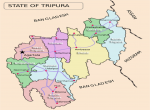
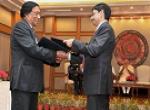
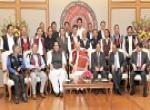
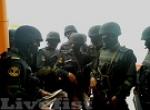
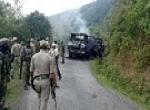
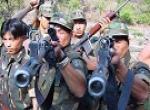
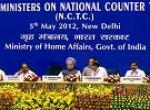
Post new comment